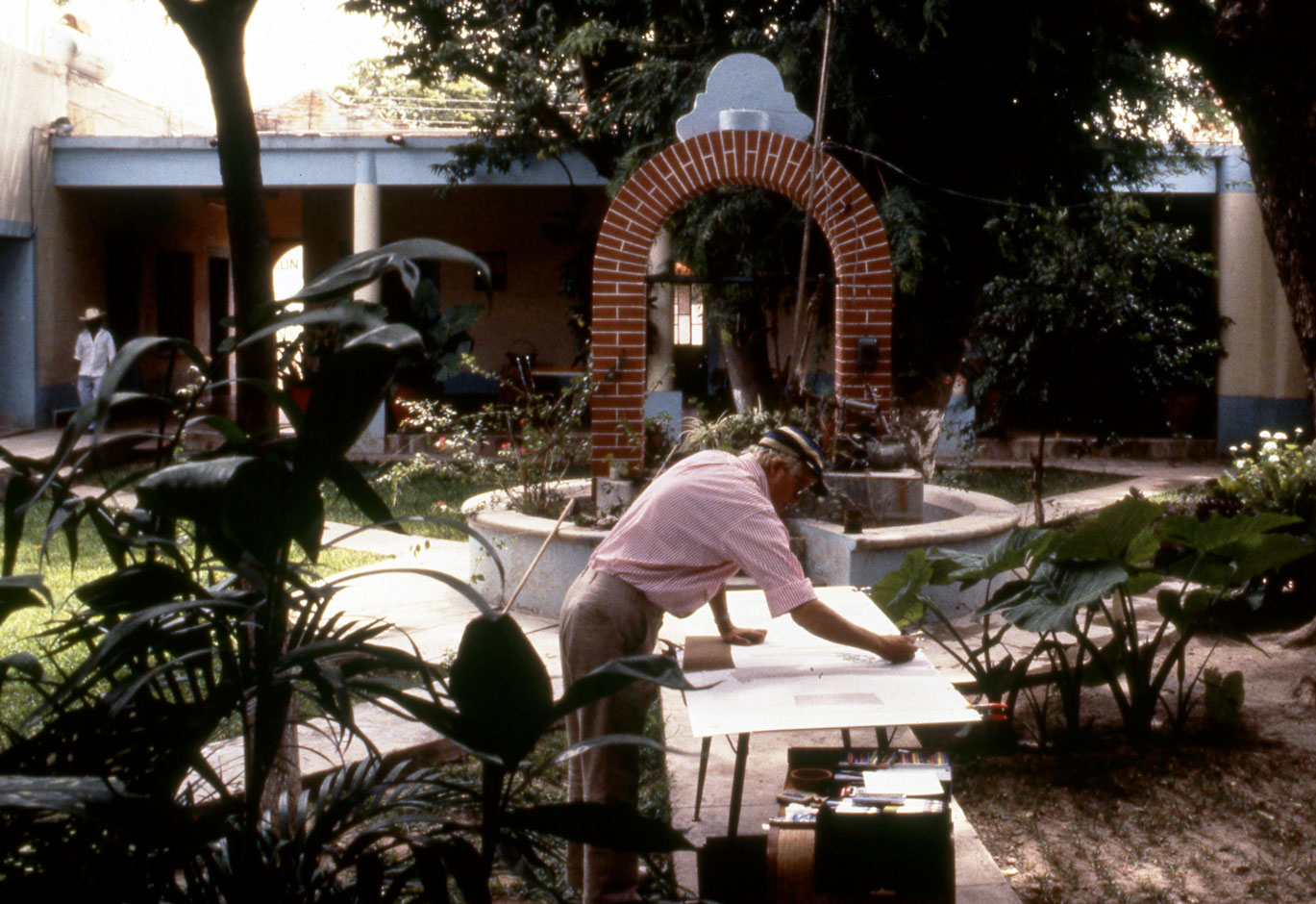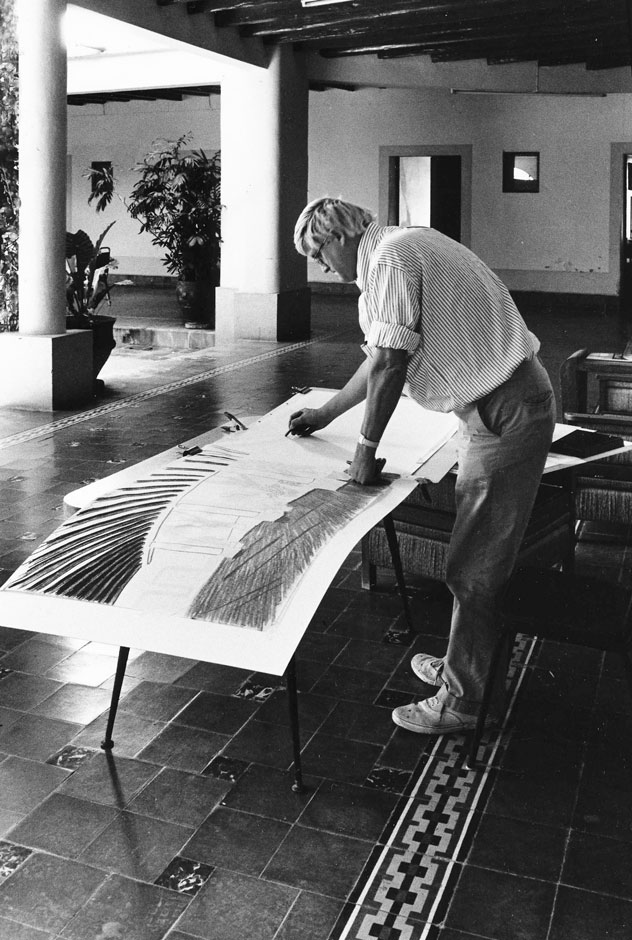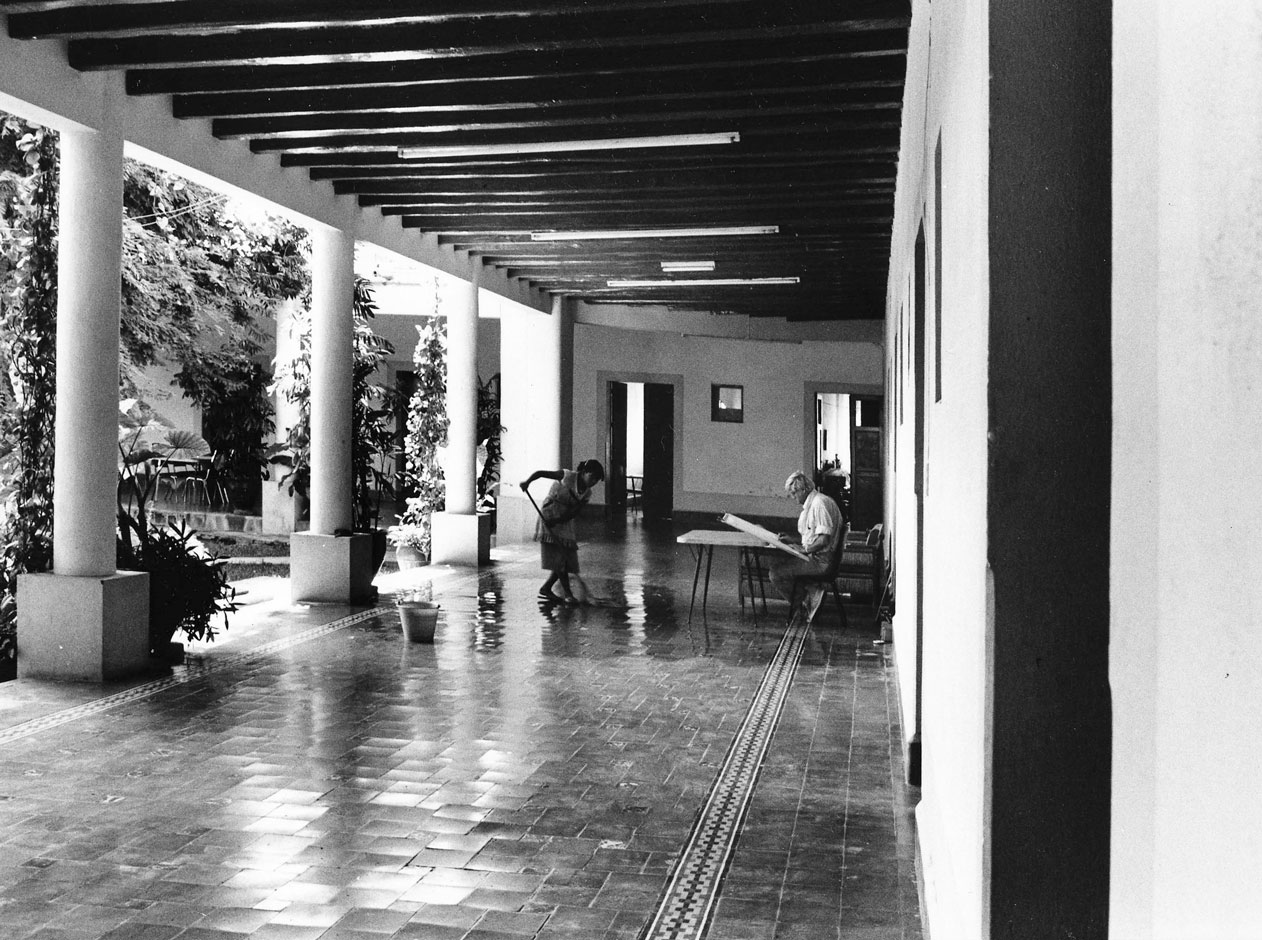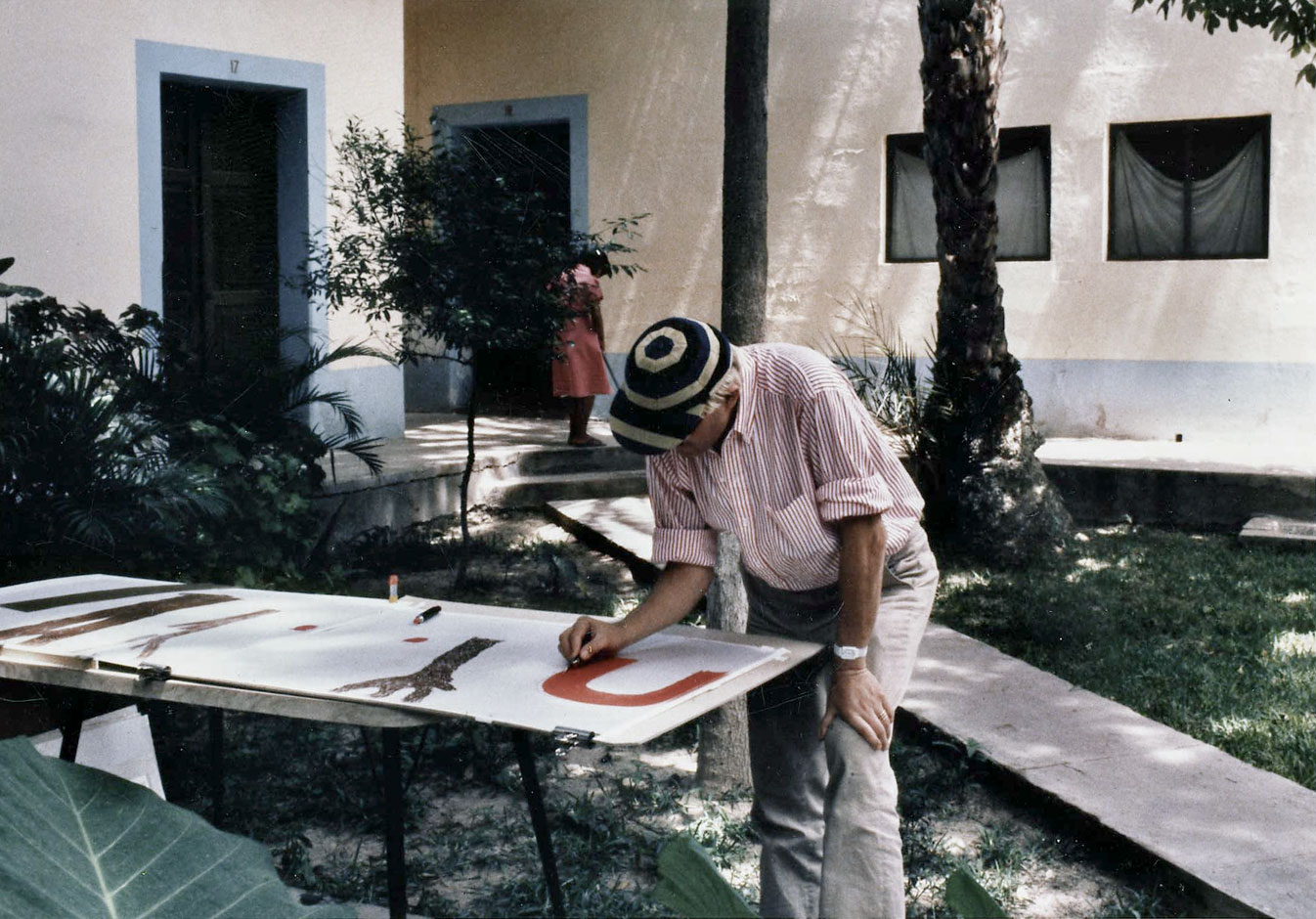Moving Focus
Many Perspectives!
David Hockney’s focus is constantly moving. He is always seeking new possibilities for depicting space, exploring perspectival depiction and probing new media.
The group of works called Moving Focus has given its name to the exhibition at the Kunstmuseum Luzern. That group often includes interiors. The artist renders furniture, terraces, dining rooms, as if he had been constantly moving his head. And the fact is that we rarely perceive our surroundings in rectangular form with stable horizontals and fixed verticals. For example, when we focus on a screen in front of us and at the same time see a scurrying shadow, the chairs at the other end of the table, a the cat scampering, the standard lamp, we are coming somewhat closer to David Hockney’s way of drawing.
“Reverse” Perspective
When Hockney turned away from naturalism in the 1980s, he also radially questioned central perspective. To do this he suddenly turned it around, shifting the vanishing point behind his back, that is to say, behind the viewer as well. For example, the table on which the vase with the amaryllis is standing, is depicted in reverse perspective.
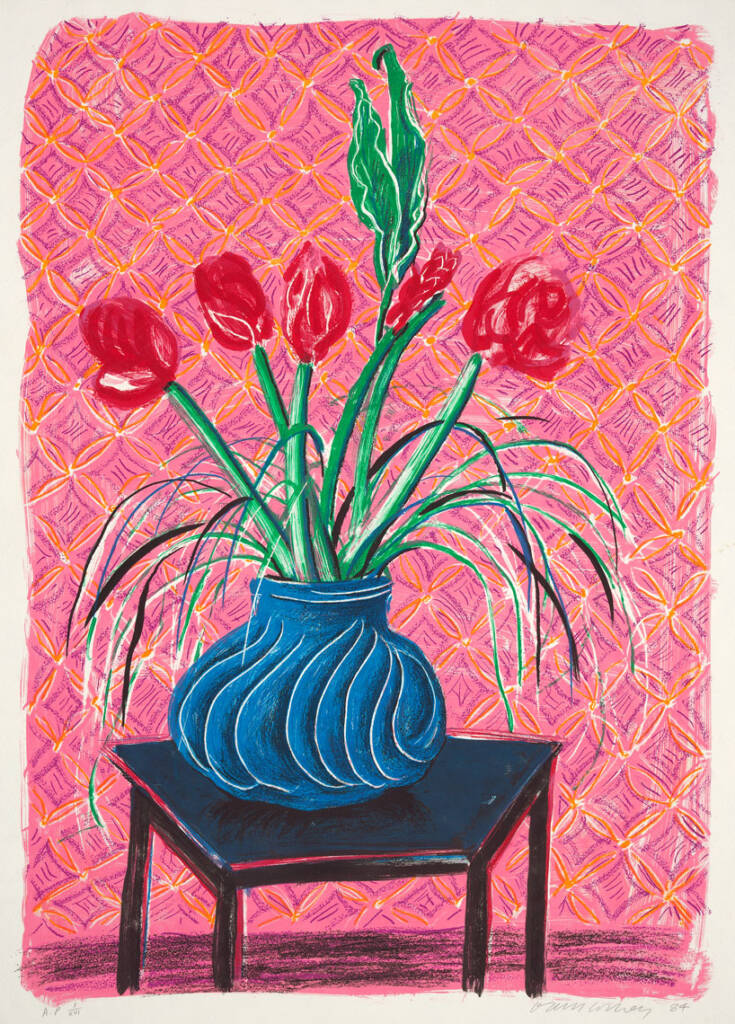
Multiperspectivity
Hockney is always preoccupied with how to unite several perspectives in one work of art. In his view, multiperspectivity corresponds how we actually perceive things, as this is shaped not only by different angles of vision, but also by emotions and feelings.
Here Cubism was an important model for him as it split a motif, presenting different views of it. What is more, on a trip he undertook in 1981 Hockney discovered Chinese scrolls paintings. Those images, in extreme longitudinal or horizontal formats, have to be unrolled to be viewed. They tell their stories by capturing different factors of an event or a landscape from different perspectives.
“I think that the West’s biggest mistakes were surely the invention of the external vanishing point and the internal combustion engine.”
David Hockney, 2007
Serendipity
While on an excursion to Mexico David Hockney’s car broke down. Unexpectedly he had to spend the night at Hotel Romano Angeles in Acatlán. What a happy coincidence that was. The artist came upon the charming inner courtyard with its covered arcade and pattering fountain and immediately started doing sketches of the place. He returned there later with the graphic artist Kenneth Tyler in preparation for a series of prints.
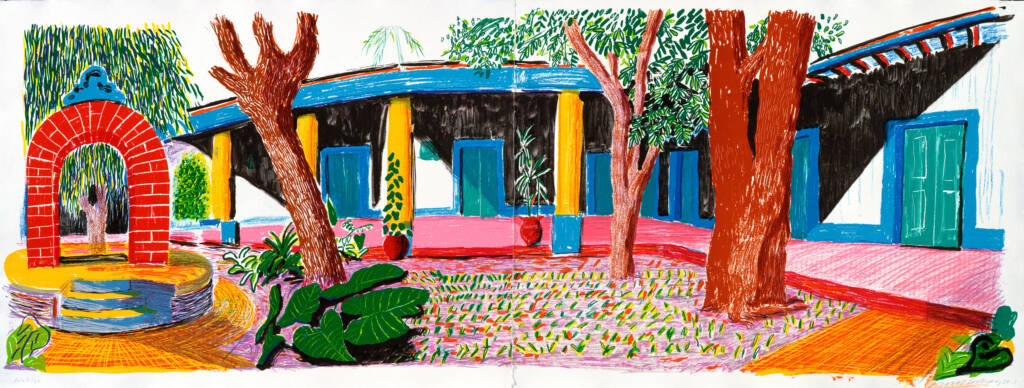
Hockney moved about the inner courtyard, positioned himself beside the fountain or sat in the arcade and captured different views. Later he gathered these together in one image. As a result, the space takes on a dynamism, while the multiple perspectives convey movement. The prints however were only finalised in the studio. Together with Kenneth Tyler, Hockney developed a new technique for making the colours shine more brilliantly.
